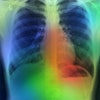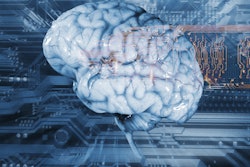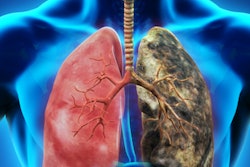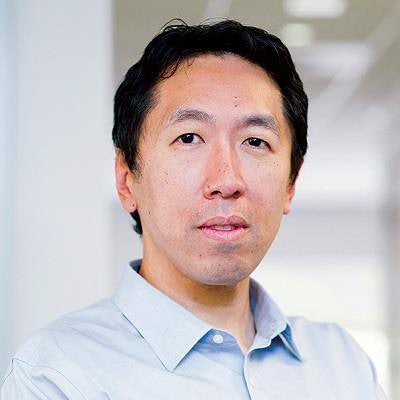
BURLINGAME, CA - With the advance of artificial intelligence (AI) in medicine well underway, what's holding AI back from being deployed in clinical practice? AI luminary Andrew Ng, PhD, discussed several challenges to the process and the role radiologists can play in overcoming them during a keynote address delivered May 31 at the RSNA Spotlight Course: Radiology in the Age of AI.
Today we see the huge impact that AI is having in radiology research, but its clinical adoption appears to be slow, he told course attendees. Ng is a professor of computer science at Stanford University and CEO of Landing AI. He also served as director of the Google Brain deep-learning AI project and co-founded online learning platform Coursera.
"Progress in technology usually starts slowly, then moves very quickly. ... This is a common pattern in the adoption of AI, not just in healthcare," he said. "But once you get AI to work at a hospital somewhere, it will spread like wildfire across the world."
Today's challenges for AI
"There is a rule of thumb that any task a person can do with one second of mental thought is a candidate for AI automation," Ng continued.
Indeed, numerous AI algorithms capable of performing radiology tasks are already in the works. For example, Ng and colleagues from Stanford University have developed various deep-learning algorithms that can detect up to 11 different pathologies on chest x-rays, spot abnormalities on knee MRI scans, and identify cerebral aneurysms on head CT angiograms -- all at a level comparable to that of radiologists.
Despite these developments, the integration of AI into everyday clinical practice can still feel slow, Ng noted. Why? He pointed to three major challenges facing clinicians today:
- Limited data: Often referred to as the issue of "top 10 conditions," a limitation of many of the current AI algorithms in radiology is that they are only able to provide an accurate diagnosis of the most common medical conditions. Rare conditions have proven particularly difficult for AI to pinpoint due to the shortage of imaging data displaying them.
- Generalizability: A machine-learning model that works in the controlled environment described in a published paper frequently fails to work the same way in a production setting, he added. For imaging AI, algorithms are generally trained on a particular type of data, perhaps from a single institution, which leaves a huge gap between what worked in a specific research lab versus what will run in a different, real-life setting.
- Safety and regulations: As with all innovations in healthcare, patient safety is paramount, he noted. Many regulations are in place to make sure that an AI algorithm does not cause harm. These regulations may delay the implementation of AI in medicine, yet they are nonetheless essential.
It is hard for AI to diagnose a rare condition based on just 10 images available in a medical textbook, Ng said. "Learning how to get algorithms to detect conditions on a limited number of images, or small data, is critical to breaking into the area of detecting rare conditions."
To emphasize this point, Ng demonstrated how effects as simple as glare or as extreme as the presence of unidentified objects in the background of a medical image diminished the ability of his team's XRay4All AI algorithm to diagnose pleural effusion on an x-ray.
"Machine-learning [algorithms] start out working well but gradually worsen over time because of natural changes in the environment," he said. "I'm incredibly optimistic about all of these algorithms, but these are things that we need to keep working on."
"With the rise of machine learning, we do not want an absence of regulation, but countries with thoughtful regulations will see faster adoption of machine-learning in healthcare ... which will allow us to protect patients and serve patients better," he said.
Moving forward
For their part, scientists and engineers have been making improvements to several technical aspects of AI to address these barriers. A major way for radiologists to also contribute to this aim is to obtain and share more data.
"There's a lot of exciting work going on -- we are doing a lot of technical work to improve the generalizability of algorithms," Ng said. "But if we, as a community, can find a way to share more data, we will all be much better off."
Looking ahead, Ng suggested that AI experts and radiologists seek to form transfunctional teams to identify precisely where AI and radiology intersect. AI continues to receive a lot of hype, and it can be difficult to discern what is truly necessary for radiology, he noted.
"The best way to move forward is to have AI experts and radiologists work together," he said. "A lot of the best work in MRI was done with physicists working alongside radiologists. And I hope that in the next few years, or decades, if you're able to welcome AI experts in radiology, we can accomplish a lot of things that were not possible before."
Concerns addressed
Following the keynote address, Dr. Curtis Langlotz from Stanford University hosted a fireside chat, during which he and Ng addressed additional concerns regarding AI in radiology, beginning with the fear that AI may one day replace radiologists.
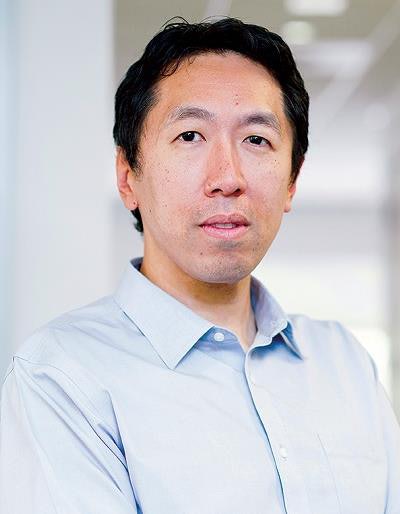 Andrew Ng, PhD.
Andrew Ng, PhD."In the tech world, we're used to dramatically shifting our work every five years, and now we're forcing other fields to change their pace faster than before," Ng said. "A lot of the tasks that radiologists do are ripe for automation, sure, but if radiologists think about what the important work is and are willing to broaden their horizons to focus on slightly different tasks, they will be fine."
Using retail as a precedent, Ng concluded by illustrating the broader implications of the inevitable centralization of data as a result of integrating AI into radiology. Historically, retail has long maintained a balance of power in terms of decision-making. Individual stores had to make small decisions because only they had access to local knowledge, whereas company headquarters focused on large-scale decisions. With the rise of the internet and AI, headquarters can now collect data at a single store level and use the data to make decisions that they then push to the periphery.
AI is an accelerating trend that allows the center to process data and make decisions in a way that is more efficient than ever before, Ng said. The danger here is that the centralization of data and subsequent decision-making could leave out crucial players.
"One of the unfortunate things about AI is that, in multiple industries, we are increasingly creating a winner-take-all dynamic," he said. "So even as we create tremendous value, I think that, left to its own devices, [AI] also creates a lot of inequality. As industries navigate that balance, I think it is important to place protections ... to ensure that, even as we use AI to create a lot of value for our industry as a whole, that value is distributed fairly."
